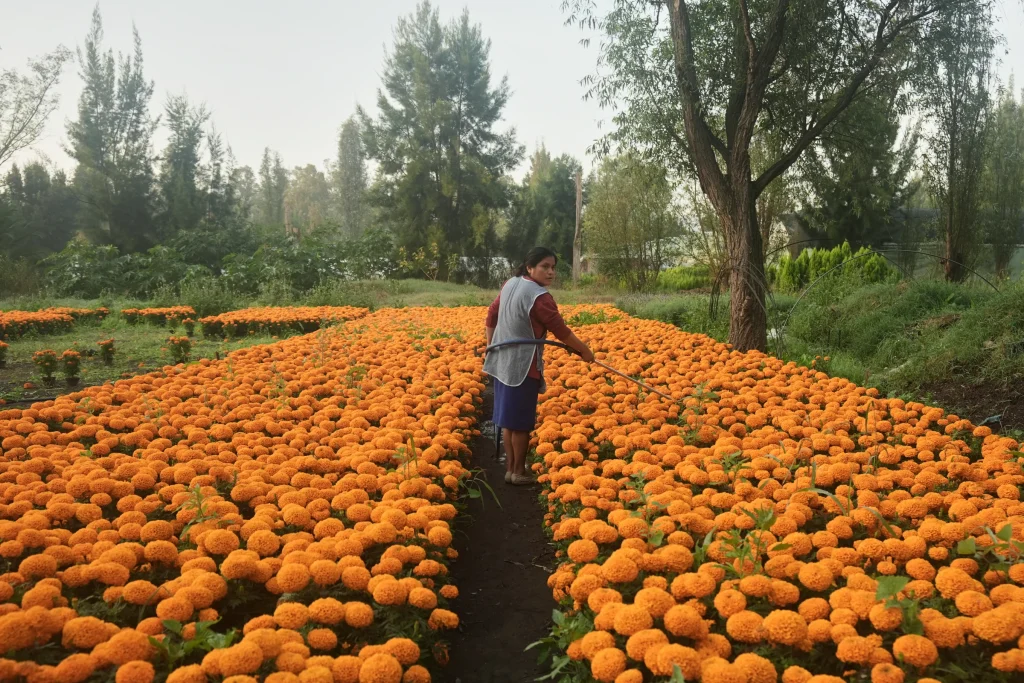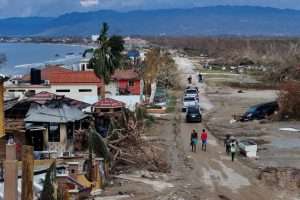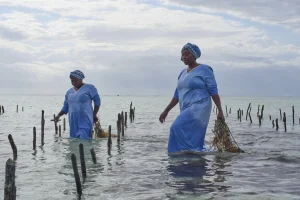Climate change endangers Mexico’s Day of the Dead flower

Flor Jimenez waters her crop of cempasuchil flowers in preparation for Day of the Dead celebrations in Xochimilco where marigolds are grown on the outskirts of Mexico City, Thursday, Oct. 16, 2025. (AP Photo/Claudia Rosel)
Climate change is threatening Mexico’s traditional Day of the Dead flower as farmers struggle with floods, drought and falling harvests, reported AP news on 31 October.
In the canals and farms on the outskirts of Mexico City, the bright orange flower known as Cempasúchil or Mexican marigold has been grown for generations to mark the nation’s Day of the Dead celebrations.
Farmers say their livelihoods and this cultural tradition are under threat from climate driven shifts in rainfall patterns, drought, flooding and pests. “This year, we lost a lot. We struggled to even grow the cempasuchil. There were moments in which we didn’t have the money to buy fertilizer we needed,” 50 year-old farmer Lucia Ortíz told AP news. “With the cempasuchil plants, we’ve sometimes been left with nothing.”
This year, cempasúchil producers report losses of up to half their crop due to heavy rains and flooding.
The flower has become a key symbol, also known as the “flower of the dead”, the petals are believed to light the path of souls to the altars set out by their family.
In the rural borough of Xochimilco in Mexico City, where families continue ancient farming techniques along winding canals, the tradition is being squeezed. Every year the seeds are planted in July and grown as the rainy season winds down. But farmers say that they’ve been dealt a heavy blow from torrential rains, droughts and other climate shifts.
Biologists and seed bank scientists are scrambling to help adapt the flower-crop to changing conditions. In a small seed bank, thousands of seed variants of native plant species, including 20 variants of cempasúchil are being stored so that more resilient strains might be made available to help local producers.
As seed bank head Clara Soto Cortés explained: “These native seeds have adapted to different geographies, in high altitudes and low, in places where there’s a lot of rain or there’s none at all, or where they need to be resistant to insects.”
She compared them with hybrid marigold seeds imported from the United States that many growers have turned to because they’re easier to sell in bulk. “The [hybrid] seeds have been bred for another purpose. It doesn’t have the genetic diversity needed to take on climate change.”
For farmers such as Ortíz and Carlos Jiménez, 61, the choice now is obvious. It’s that they either adapt with expensive inputs, or abandon a tradition their families have held for decades. “The plants get sick, they rot, and our business is snuffed out,” Jiménez said. “And with it goes our tradition because it’s our economy.”
Ortíz is already considering switching to other crops she believes might be more resilient than the “crinkled orange flowers”. But she added, “This plant has a deeper meaning to our lost loved ones. These are traditions we carry down from our ancestors. They can’t just disappear.”
AP news
Want to chase the pulse of North Africa?
Subscribe to receive our FREE weekly PDF magazine














